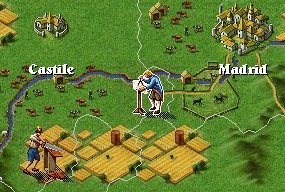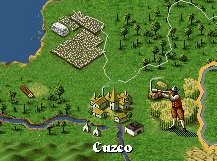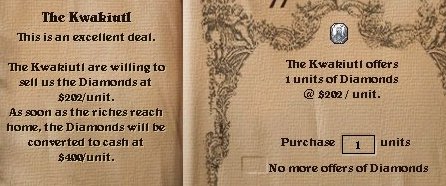I like playing on the european map because of the added historical feel, but the random worlds have the advantageous option of choosing ones own starting position of the capital.
As usual I had to consider the single most important factor: food. Allthough there's a special fouraging rule which makes every home province produce some food with no development needed, there will still be need for much more food. So before conquest could even be considered, I had to take care of the farming.
 Never food enough! Well, not so really, but even when there's enough, it's a wise choice to build up a stockpile, so that's what I did. The guy in the blue coat is the engineer who connects productive tiles to the capital. The other one is the builder who develops the farms and any other production tile in the game.
Never food enough! Well, not so really, but even when there's enough, it's a wise choice to build up a stockpile, so that's what I did. The guy in the blue coat is the engineer who connects productive tiles to the capital. The other one is the builder who develops the farms and any other production tile in the game.

